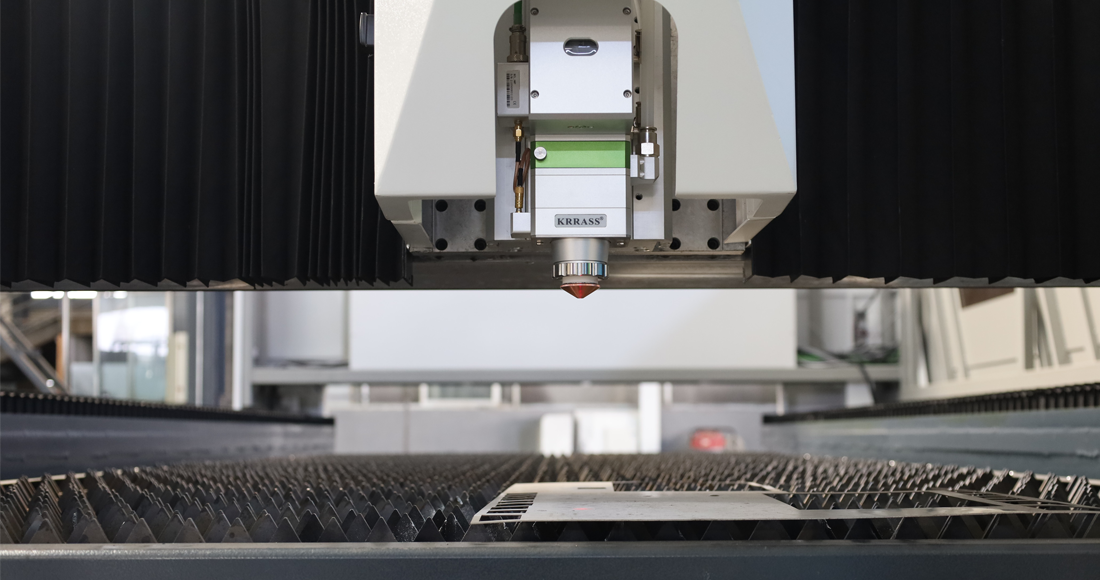Laser cutting aluminum revolutionizes the manufacturing process, providing precision and efficiency unmatched by traditional methods. This comprehensive guide covers everything you need to know about laser cutting aluminum, from the mechanics of the process to selecting the right laser cutting machine for your needs.
- Can Aluminum Be Cut With a Laser?
- How Does Laser Cutting of Aluminum Work?
- Why Invest in Laser Cutting Machine
- What Are the Different Types of Laser Cutters Used for Cutting Aluminum?
- Specifics of Laser Cutting Aluminum
- What Are the Main Parts of a Laser Cutter for Aluminum?
- What Are the Main Parameters for Laser Cutting Aluminum?
- What Are the Advantages and Challenges of Laser Cutting Aluminum?
- Which Industries Utilize Laser Cutting for Aluminum?
- Key Factors and Mistakes to Consider When Laser Cutting Aluminum
- Practical Guide: How to Laser Cut Aluminum?
- How Much Does Laser Cutting Aluminum Cost?
- How to Choose a Right Laser Cutting Machine
Can Aluminum Be Cut With a Laser?
The short answer is, yes! Aluminum can be efficiently and precisely cut using a laser cutting machine. In the realm of industrial manufacturing, laser cutting aluminum has revolutionized the way we shape and form this versatile metal. As a manufacturer, we know firsthand the importance of precision and quality when it comes to working with aluminum.
Laser cutting machines employ a focused beam of light to melt, burn, or vaporize the material, thereby achieving the desired shape or design. The process is highly accurate and leaves a clean, smooth edge, minimizing the need for additional finishing processes. This is especially important for aluminum, as its properties can sometimes make it challenging to work with using traditional cutting methods.
One significant advantage of laser cutting aluminum is the level of customization it allows. With the precise control afforded by laser cutting machines, intricate designs and complex shapes can be easily achieved. This opens up a realm of possibilities for manufacturers looking to create unique, customized products or components.
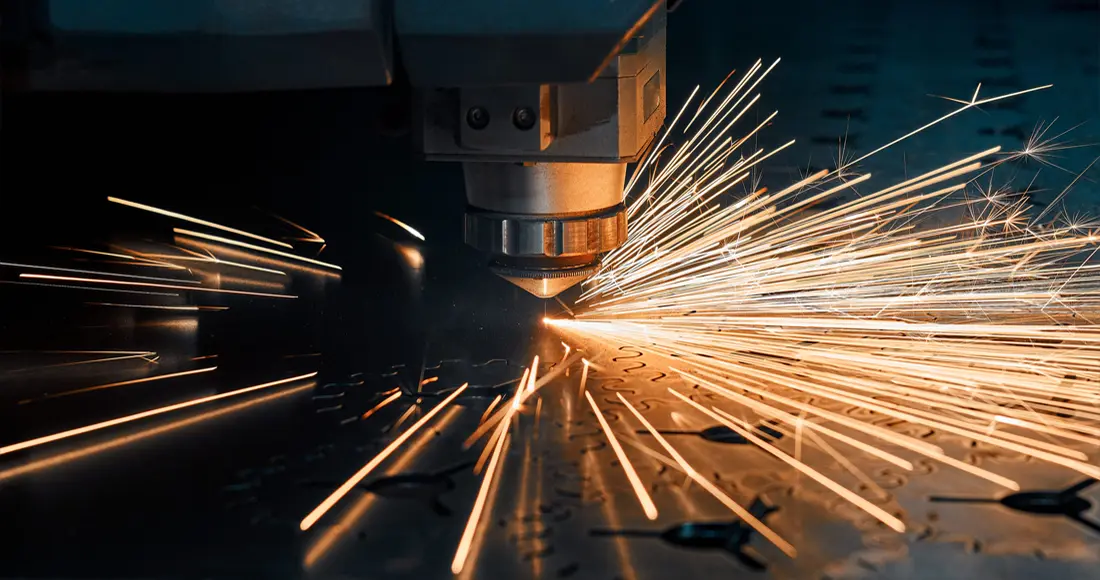
How Does Laser Cutting of Aluminum Work?
Programming the Machine
The first step in the laser cutting process involves programming the laser cutting machine. This includes inputting the design or pattern to be cut into the machine's computer system. High precision is required during this stage to ensure the final product meets the desired specifications. Our team of skilled technicians is adept at handling this intricate process, ensuring every detail is accounted for.
Material Loading
Once the machine is programmed, the next step is to load the aluminum material into the machine. This involves placing the aluminum sheet or roll onto the machine's worktable, ensuring it is correctly aligned and secured in place. Safety is a priority during this stage, and our operators are trained to handle the material safely and efficiently.
Calibrating the Laser
Before starting the cutting process, the laser must be calibrated to the specific type of aluminum being used. This involves adjusting the laser's settings, such as its power, speed, and focal length, to match the material's thickness and properties. Proper calibration is crucial to achieving a precise and clean cut.
Cutting Process
With everything set up, the cutting process can begin. The laser head moves over the aluminum, following the programmed pattern, while the focused laser beam melts, burns, or vaporizes the material. The result is a precise cut that follows the desired design or pattern. Our laser cutting machines are equipped with advanced technology that ensures a smooth and accurate cutting process.
Post-Processing
After the cutting is complete, the final step is post-processing. This may include cleaning up any residue left on the aluminum, as well as any additional finishing processes required to meet the product's specifications. Our team takes pride in delivering a final product that is not only precise but also meets the highest standards of quality.
Why Invest in Laser Cutting Machine
In today's fast-paced industrial world, investing in a laser cutting machine is a strategic move for any manufacturer dealing with metals, including aluminum. The benefits are multifold and can significantly enhance your production process, ultimately contributing to your bottom line.
Firstly, precision is one of the standout features of laser cutting machines. The ability to make precise and intricate cuts results in products that meet the highest standards of quality. This level of accuracy is particularly beneficial when working with aluminum, a material that requires a delicate touch due to its properties.
Furthermore, laser cutting machines offer a high degree of flexibility. Whether you're dealing with complex shapes, detailed designs, or custom orders, these machines can handle it all. This opens up a world of possibilities for manufacturers looking to diversify their product offerings and cater to a wider range of customer needs.
Another major advantage is the efficiency of laser cutting machines. They are designed to minimize waste, thereby saving on material costs. Additionally, the speed at which they operate significantly reduces production times, allowing for higher output and quicker turnarounds.
Last but not least, the automation aspect of laser cutting machines can result in lower labor costs. With less manual intervention required, manufacturers can allocate their human resources more effectively, leading to an overall more streamlined operation.
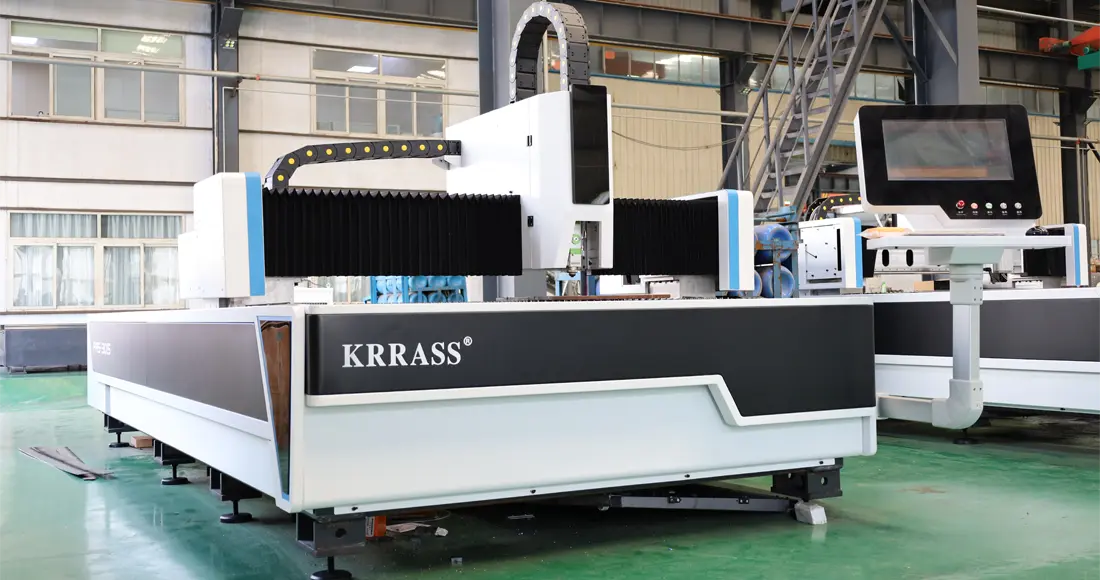
What Are the Different Types of Laser Cutters Used for Cutting Aluminum?
Fiber Laser Cutters
Fiber laser cutters are among the most popular and efficient laser cutting machines used for cutting aluminum. These cutters use a fiber laser source, which is more effective on reflective materials like aluminum. Fiber laser cutters are known for their speed, precision, and energy efficiency, making them a go-to choice for many manufacturers dealing with aluminum.
CO2 Laser Cutters
CO2 laser cutters are another option for cutting aluminum, although they may not be as efficient as fiber laser cutters for this specific material. CO2 lasers use a gas mixture to produce the laser beam, which can be absorbed by aluminum, potentially reducing the cutter's effectiveness. However, CO2 laser cutters are still widely used and can be suitable for certain aluminum cutting applications.
Solid-State Lasers
Solid-state lasers are another type of laser cutter used for cutting aluminum. These cutters use a solid medium, such as a crystal or glass, to generate the laser beam. Solid-state lasers are known for their high power and ability to cut thick materials. However, they may not be as energy-efficient or fast as fiber laser cutters.
Specifics of Laser Cutting Aluminum
The Aluminum Oxide Film
Aluminum naturally forms an oxide film on its surface, which can affect the laser cutting process. This film has a higher melting point than the aluminum itself, which can result in an uneven cut or even a failed cutting attempt. To combat this, specific laser settings and techniques must be employed to ensure a clean and precise cut.
Viscosity and Thermal Conductivity
The viscosity and thermal conductivity of aluminum are unique compared to other metals. These properties can cause the aluminum to absorb the laser's energy, potentially leading to an incomplete cut. Special attention must be paid to the laser's power and speed settings to account for these properties and ensure a successful cutting process.
Assist Gas Flow and the Laser Focus
The flow of assist gas and the focus of the laser are crucial factors in the laser cutting process. The assist gas helps to blow away any molten material, while the laser focus determines the precision of the cut. Proper adjustment of these factors is essential to achieving a clean, precise cut when working with aluminum.
How to Optimize the Laser Cutting Process?
Optimizing the laser cutting process for aluminum involves a combination of factors, including the right laser settings, correct assist gas flow, and proper maintenance of the laser cutting machine. Regular testing and fine-tuning of the machine's settings are necessary to ensure the best possible outcome. By paying close attention to these factors, manufacturers can achieve a high-quality, precise cut every time.
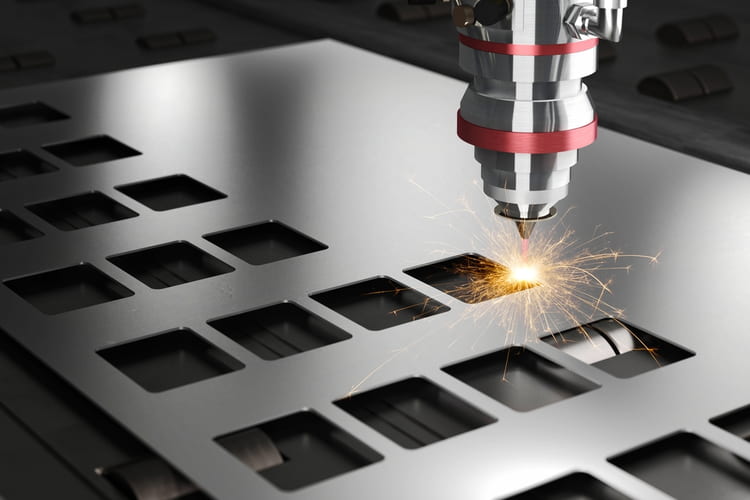
What Are the Main Parts of a Laser Cutter for Aluminum?
A laser cutter for aluminum is a complex machine composed of various integral parts, each playing a crucial role in the cutting process. Understanding the function and importance of each part can provide valuable insights into the operation of the machine and the precision it brings to aluminum cutting.
Laser Resonator
The laser resonator is the heart of the laser cutter. It produces the laser beam necessary for cutting materials. In most modern laser cutters, this is achieved through the excitation of a lasing medium, which could be a gas mixture, solid-state crystal, or fiber optic cable.
Beam Delivery System
The beam delivery system is responsible for directing the laser beam to the material being cut. This system includes various mirrors and lenses that focus and direct the laser beam with high precision, ensuring the beam reaches the desired location on the workpiece.
CNC Controller
The CNC (Computer Numerical Control) controller is the brain of the machine, responsible for translating the design inputs into precise movements of the laser cutter. It ensures that the laser beam follows the desired path, resulting in accurate and detailed cuts.
Cutting Head
The cutting head houses the final focusing lens and the nozzle through which the assist gas is delivered. The cutting head moves along the designated path directed by the CNC controller, while the assist gas helps to clear away any molten material.
Worktable
The worktable is where the material to be cut is placed. It is designed to be sturdy and stable to support the material during the cutting process. Some worktables are equipped with clamps or other holding devices to secure the material in place.
These are the main parts of a laser cutter for aluminum, each playing a crucial role in the operation of the machine. Understanding the function and importance of each part can provide valuable insights into the precision and efficiency brought to the aluminum cutting process by a laser cutter.
What Are the Main Parameters for Laser Cutting Aluminum?
What Are the Cutting Tolerances for Aluminum Laser Cutting?
The cutting tolerances for aluminum laser cutting are crucial to the overall accuracy of the process. These tolerances can vary based on the thickness of the aluminum sheet, the grade of aluminum, and the specific laser cutting machine being used. However, most laser cutting machines can achieve a cutting tolerance of +/- 0.005 inches.
How Thick of an Aluminum Sheet Can Be Laser Cut?
The thickness of the aluminum sheet that can be laser cut depends on the power of the laser cutter. Most industrial laser cutters can handle aluminum sheets up to 1 inch thick. However, as the thickness of the sheet increases, the cutting speed and accuracy may decrease.
What Is the Best Grade of Aluminum for Laser Cutting?
The best grade of aluminum for laser cutting depends on the specific application and requirements of the project. Some common grades used for laser cutting include 5052, 6061, and 7075. These grades offer a good balance of strength, machinability, and weldability, making them ideal choices for a variety of applications.
What Are the Advantages and Challenges of Laser Cutting Aluminum?
Advantages of Laser Cutting Aluminum
High Precision
Laser cutting aluminum provides high precision and accuracy, allowing for intricate designs and tight tolerances. The laser beam's focused nature ensures that the cuts are clean and precise, resulting in a high-quality finish.
Speed
The speed of laser cutting aluminum is significantly faster than other traditional cutting methods. This efficiency translates into quicker production times and lower costs for manufacturers.
Versatility
Laser cutting machines can handle a wide range of aluminum thicknesses and grades. This versatility allows manufacturers to easily switch between different materials and projects, increasing the machine's overall utility.
Additional Advantages
Other advantages of laser cutting aluminum include the ability to cut complex shapes without the need for additional tooling, minimal material waste, and the possibility of automation, which further increases efficiency and lowers costs.
Challenges in Laser Cutting Aluminum
High Reflectivity
Aluminum's high reflectivity can be a challenge in laser cutting as it may reflect the laser beam, reducing the machine's efficiency and potentially damaging its components.
Thermal Conductivity
The high thermal conductivity of aluminum means that heat is quickly dissipated during the cutting process, which can lead to incomplete cuts or the need for higher laser power.
Cost
Laser cutting machines are expensive to purchase and maintain. The high cost of these machines can be a significant investment for manufacturers, especially small businesses or those just starting out.
Additional Challenges
Other challenges in laser cutting aluminum include the need for skilled operators, potential for burring, and the possibility of thermal distortion if the proper settings and techniques are not used.
Is Laser Cutting Aluminum Expensive?
The cost of laser cutting aluminum can be higher compared to other materials due to its unique properties. The high reflectivity and thermal conductivity of aluminum require specific laser settings and potentially more powerful lasers to achieve the desired results, which can increase costs. Additionally, the overall cost will depend on factors such as the thickness of the aluminum, the complexity of the design, and the laser cutting machine used.
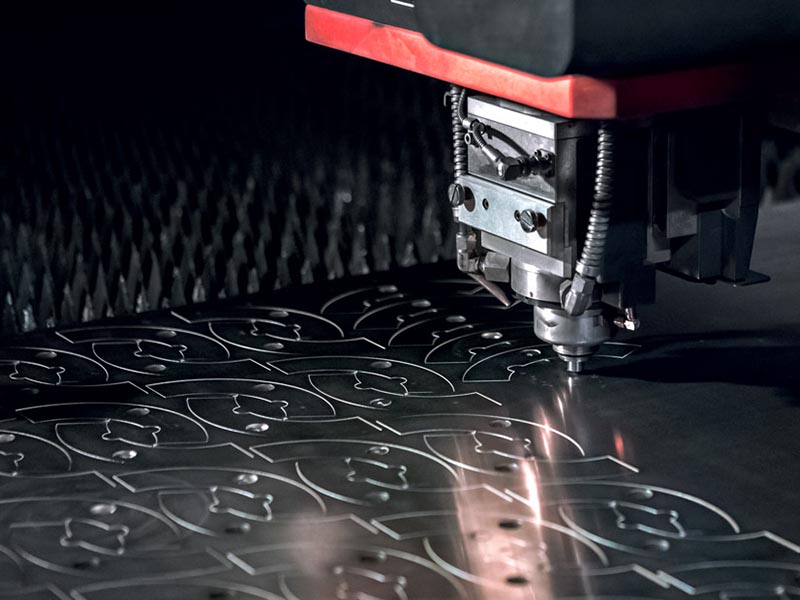
Which Industries Utilize Laser Cutting for Aluminum?
Laser cutting technology has revolutionized the way we work with aluminum, bringing precision, speed, and versatility to the forefront. It's no wonder that a wide range of industries now leverage this innovative technique to optimize their operations and products. Let's explore some of the key industries that utilize laser cutting for aluminum.
Aerospace Industry
Aluminum is a staple material in the aerospace industry due to its lightweight yet strong characteristics. Laser cutting provides the precision required to create intricate components for aircraft, satellites, and spacecraft, ensuring that every piece meets the strict standards and tolerances required in this field.
Automotive Industry
The automotive industry is constantly seeking ways to improve efficiency and reduce vehicle weight to enhance fuel efficiency. By utilizing laser cutting for aluminum parts, manufacturers can produce lightweight, high-strength components that contribute to overall vehicle performance and safety.
Construction Industry
In construction, aluminum is often used for roofing, siding, and structural components. Laser cutting allows for precise and efficient production of these materials, ensuring they fit together perfectly and meet the necessary specifications.
Electronics Industry
The electronics industry relies on laser cutting to produce intricate aluminum components for devices such as smartphones, tablets, and laptops. The precision of laser cutting ensures that even the smallest parts are produced accurately and meet the high-quality standards required in this industry.
Medical Industry
Laser cutting is used in the medical industry to create precise aluminum components for medical devices and equipment. The high precision and cleanliness of the laser cutting process make it an ideal choice for producing components that must adhere to strict hygiene and quality standards.
Additional Industries
In addition to the industries mentioned above, laser cutting for aluminum is also utilized in other fields such as marine, energy, and defense. The versatility and precision of laser cutting make it a valuable technique for a variety of applications across different sectors.
Key Factors and Mistakes to Consider When Laser Cutting Aluminum
Key Factors to Consider
1. Material Thickness
The thickness of the aluminum plays a crucial role in determining the laser's power and speed settings. Make sure to adjust these parameters according to the material's thickness to achieve optimal results.
2. Laser Type and Power
Selecting the appropriate laser type and power is essential. Fiber lasers are generally preferred for cutting aluminum due to their efficiency and precision. The power of the laser should be sufficient to cut through the material but not too high to avoid excessive melting or damage.
3. Cutting Speed
The cutting speed should be carefully calibrated to match the material thickness and laser power. Too fast a speed may result in incomplete cuts, while too slow a speed can cause overheating and reduce the cut quality.
4. Assist Gas Flow
Proper assist gas flow is essential to prevent oxidation at the cut edges and improve the overall cut quality. The type and pressure of the assist gas should be selected based on the material thickness and desired finish.
Common Mistakes to Avoid
1. Incorrect Laser Settings
Using incorrect laser settings is a common mistake that can result in poor cut quality or damage to the material. Make sure to consult the machine's manual and perform test cuts to find the optimal settings for your specific project.
2. Inadequate Material Preparation
Ensure that the aluminum surface is clean and free from contaminants before cutting. Dirt, oil, or other impurities can affect the laser's ability to cut the material accurately.
3. Neglecting Maintenance
Regular maintenance of the laser cutting machine is crucial to ensure its optimal performance. Neglecting maintenance can lead to a decrease in cut quality and increase the risk of machine breakdowns.
4. Ignoring Safety Precautions
Laser cutting involves high-power lasers that can be dangerous if proper safety precautions are not taken. Always wear the necessary protective gear and follow safety guidelines to prevent accidents.
Practical Guide: How to Laser Cut Aluminum?
Preparations Before Laser Cutting Aluminum
Before diving into the exciting world of laser cutting aluminum, there are a few critical steps you need to take to ensure a smooth process:
1. Material Selection
Choose the right grade of aluminum for your project. Each grade has different properties that can affect the cutting process and the final result.
2. Surface Preparation
Clean the aluminum surface thoroughly to remove any dirt, oil, or contaminants. This ensures the laser can cut the material accurately and improves the cut quality.
3. Machine Setup
Calibrate the laser cutting machine according to the material thickness and desired cut quality. Perform test cuts if necessary to find the optimal settings.
Safety Tips for Laser Cutting Aluminum
Laser cutting can be dangerous if proper safety precautions are not taken. Here are some tips to ensure a safe cutting process:
1. Wear Protective Gear
Always wear the necessary protective gear, including safety glasses, gloves, and ear protection.
2. Follow Machine Guidelines
Read and follow the machine's manual and safety guidelines to avoid accidents and damage to the machine or material.
Design Tips for Laser Cutting Aluminum
Once you have everything set up and you're ready to start cutting, keep these design tips in mind to achieve the best results:
1. Optimize Your Design
Simplify and optimize your design to minimize the amount of cutting required. This reduces the risk of warping or damage to the material.
2. Consider Material Properties
Take into account the properties of aluminum, such as its thermal conductivity and reflectivity, when designing your project. This will help you achieve the desired cut quality and avoid common problems.
3. Test, Test, Test!
Don't be afraid to experiment and perform test cuts to find the optimal settings for your specific project. This can save you time and material in the long run.
How Much Does Laser Cutting Aluminum Cost?
When it comes to laser cutting aluminum, one of the first questions that come to mind is "how much does it cost?". The answer can vary based on a few factors. Let's dive into the details.
How Much Does a Laser Cutter for Aluminum Cost?
The price of a laser cutter for aluminum can range from a few thousand dollars to over a hundred thousand dollars, depending on the machine's capabilities, brand, and other factors. Generally, a high-quality, professional-grade laser cutter will be on the pricier side.
What Are the Best Laser Cutting Machines for Aluminum?
When it comes to the best laser cutting machines for aluminum, there are a few options that stand out. Brands like Trumpf, Amada, and Bystronic are known for their high-quality machines that can handle aluminum cutting with precision and efficiency. But, the "best" machine ultimately depends on your specific needs and budget.
Alternatives to Laser Cutting Aluminum
If the cost of a laser cutting machine is too high for your budget, there are alternatives. Waterjet cutting, plasma cutting, and mechanical cutting are all viable options for cutting aluminum. Each has its own set of advantages and disadvantages, so it's essential to research and determine which method is best for your specific needs.
How to Choose the Right Laser Cutting Machine
Selecting the perfect laser cutting machine can seem like a daunting task, especially with so many options available on the market. Here are some guidelines to help you make the right decision for your specific needs.
1. Determine Your Needs
Start by assessing your needs. What type of material will you be cutting? What thickness does the material have? How intricate are the designs you want to cut? Answering these questions will help you narrow down your options.
2. Compare Laser Types
There are three main types of laser cutters: CO2, fiber, and solid-state. Each has its pros and cons, so it's essential to compare them and see which one is best suited for your needs.
3. Consider the Machine's Power
The machine's power, measured in watts, is another crucial factor to consider. A higher wattage means the machine can cut through thicker materials and at a faster pace. However, it also means the machine will be more expensive.
4. Check the Machine's Size
The size of the machine is also important. Make sure it can accommodate the size of the materials you will be cutting. Also, ensure you have enough space in your workshop to house the machine.
5. Read Reviews and Ask for Recommendations
Before making a purchase, read reviews and ask for recommendations from others in your industry. This will give you a better idea of which machines are reliable and worth the investment.
6. Consider the Warranty and Support
Finally, consider the warranty and customer support offered by the manufacturer. A good warranty and responsive customer support can be invaluable, especially if you encounter any issues with the machine.
Choosing the Best Laser Cutting Machine
Selecting the right laser cutting machine is pivotal to achieving the perfect cut. When it comes to leading manufacturers of laser cutting machines, Krrass stands out as a pioneer in the industry. Based in China, Krrass offers a range of top-notch laser cutting machines that cater to various needs. Visit www.krrass.com to explore the best laser cutting solutions tailored to your requirements.
Read More:
Laser Cutting Machine: What You Need to Know
What is the difference between fiber laser cutting machine and plasma cutting machine?
